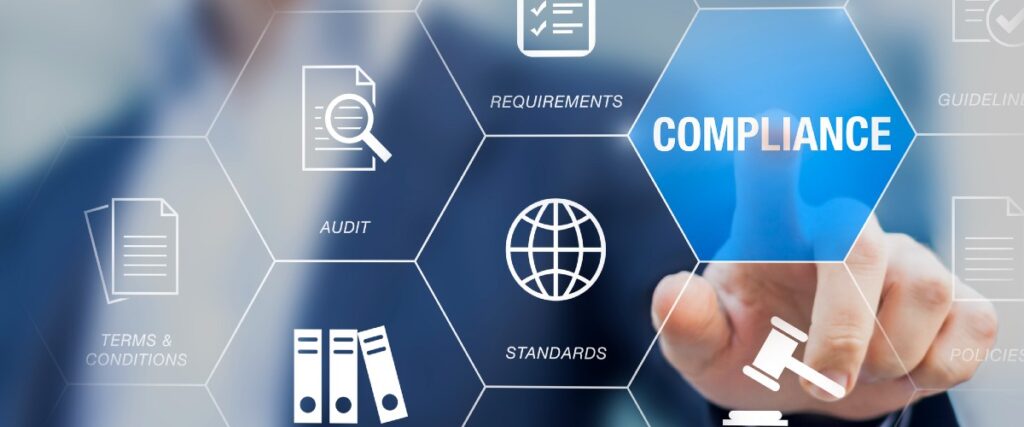A culture of compliance means every employee understands their role in building an ethical workplace. Businesses need to focus on this at every level of the organization.
Five Steps To Create A Culture Of Compliance
Leaders can form their company’s compliance culture by following these five steps.
Lead From the Front
Leaders must do more than support compliance. They must be the first and most enthusiastic adopters. A company’s culture starts with its leadership, and any changes must also begin with them.
The C-suite is responsible for defining the compliance strategy and best practices. Executives must ensure they understand the basics and their importance.
They should regularly communicate the company’s compliance policies in clear, understandable terms. Demonstrating their understanding builds employees’ confidence in the procedures, making buying in easier.
Even more importantly, leaders serve as models for the rest of the company. When they demonstrate their own compliance, they show that the rules apply across the board and that everyone is responsible.
Teach Compliance From the Start
Emphasizing compliance from the start helps cement its importance and benefits all employees. Every worker should be aware of their position’s compliance requirements and qualifications from the onboarding process onward.
They should receive regular training and education that identifies the most significant risks to the company.
Leaders can also establish compliance expectations with their suppliers and other stakeholders early on, ensuring everyone is clear about policies.
Reward Proper Compliance
It’s human nature to seek rewards. Executives can motivate employees to follow compliance policies by tying them to incentives.
Establishing a reward for proper compliance identifies it as a priority. Leaders can tie it to an existing incentives program or make regular evaluations a qualification for bonuses or promotions.
It’s essential to apply any incentives fairly. Employees expect fair treatment and are likely to notice unequal practices.
This behavior makes employees more likely to resign — a lack of respect motivated 57% of those who quit a job in 2021 — and they may not continue their compliance efforts.
Take Violations Seriously
Mistakes that happen once are more likely to happen again, so leaders should analyze violations when they occur.
Understanding how they happened can help others avoid the same mistake. Companies may even discover that they need to revisit or modify the policy.
Establishing compliance as a significant part of company culture also means having consequences for violations.
Policies should include information about handling violations, so employees have a clear understanding.
Foster an Atmosphere of Trust
Monitoring compliance is important, but it’s equally vital to develop an atmosphere of trust.
Encouraging employee engagement is an essential part of building a culture of compliance. Workers who feel micromanaged or under intense surveillance are less likely to feel ownership over the culture.
Leaders should provide the training and resources they need and minimize direct oversight.
Build a Culture of Compliance
Creating a culture of compliance can benefit an organization’s legal standing, reputation, and employee well-being.
Build it up by teaching it from the first day, establishing rewards and consequences, making it a leadership priority, and encouraging buy-in.
